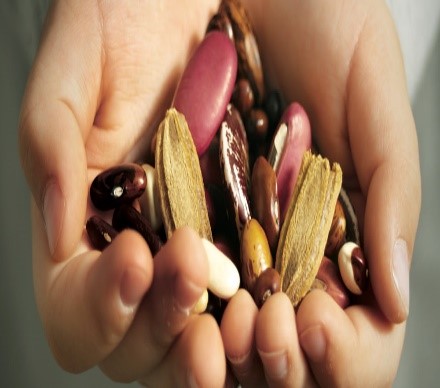It’s Never Too Early To Start Seed Saving

Photo: IllinoisStateUniversity.edu
Each fall as I harvest the bounty of my garden, I save seeds for the coming year. Yet, I always wish I’d started earlier. Bet I’m not the only one who’d like to save the seeds from the tomato that bears the earliest ripe fruit of the season.
Seeds are amazing. They are a living time capsule in a protective package. Each seed contains the food necessary to bring forth a plant. Seeds tell the story of hundreds and thousands or years of careful selection, collection, planting and sharing.
Seeds found in the Siberian tundra that were buried by ice age squirrels successfully germinated 32,000 years later! It’s worth assessing our own “old” seeds by testing if they will sprout when laid between two damp paper towels then in a plastic bag for a week.
Saving seeds ensures food and genetic diversity, it saves money and helps to reproduce varieties that do well in our climate. “Heirloom” plants, such as Heirloom tomatoes are a result of generations of seed savings.
Many of us started seed saving with flower seeds. Hollyhocks are kind enough to package their seeds in a convenient little pouch that are easily stored in a paper bag over winter. It’s fun to trade these seed bundles with others who have assorted colors in their garden.
The easiest vegetables seeds to save for beginners include beans, lettuce, peas, peppers and tomatoes.
One of the most important seed saving practices is to store CLEAN seeds. There are two common methods for cleaning and saving seeds. The dry method allows the seeds to dry on the plant, then collect and clean the chaff from the seeds and store the seeds. This method works well with beans, flowers greens, okra, peppers. The wet method works with seeds that need to be separated from plant pulp such as melons and tomatoes. These seeds are soaked in water then the floater “treads” get removed. The seeds get strained and rinsed a second time then carefully dried and stored.
Saved seeds can be successfully stored for 3-5 years. Frozen seeds can be saved up to 10 years. Always store seeds in a cool, dry place with an optimal temperature of 45 to 55 degrees with 25% humidity. Refrigeration is ideal.
For even more information on selecting plants and seeds to save as well as the mechanics behind plant creation check out this helpful link from NMSU.
